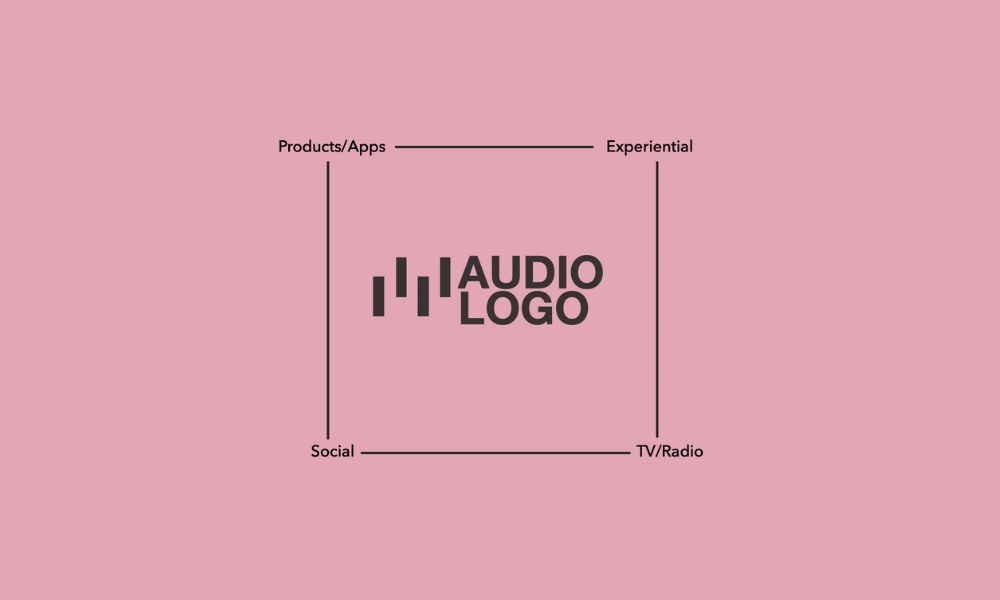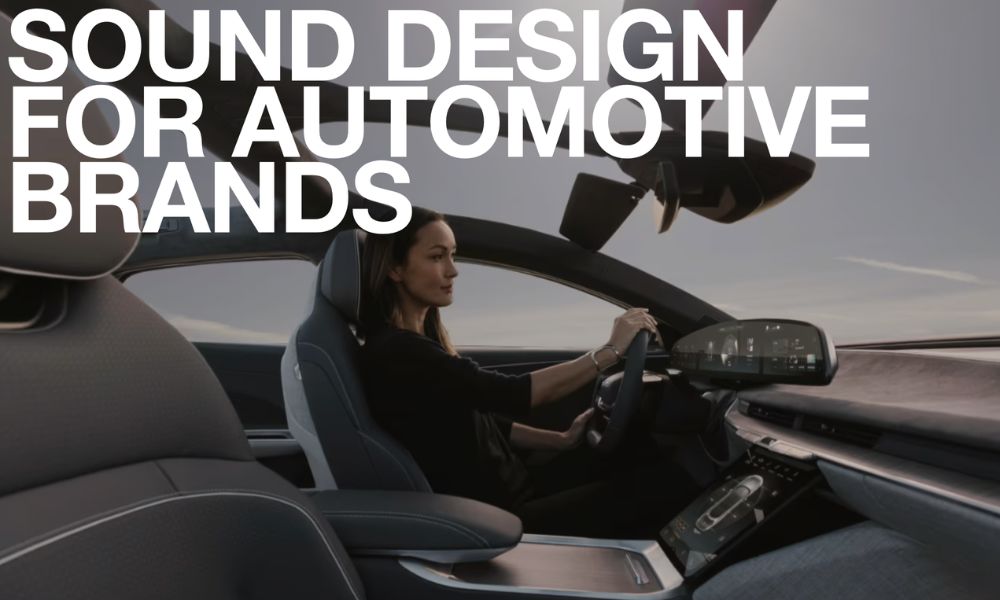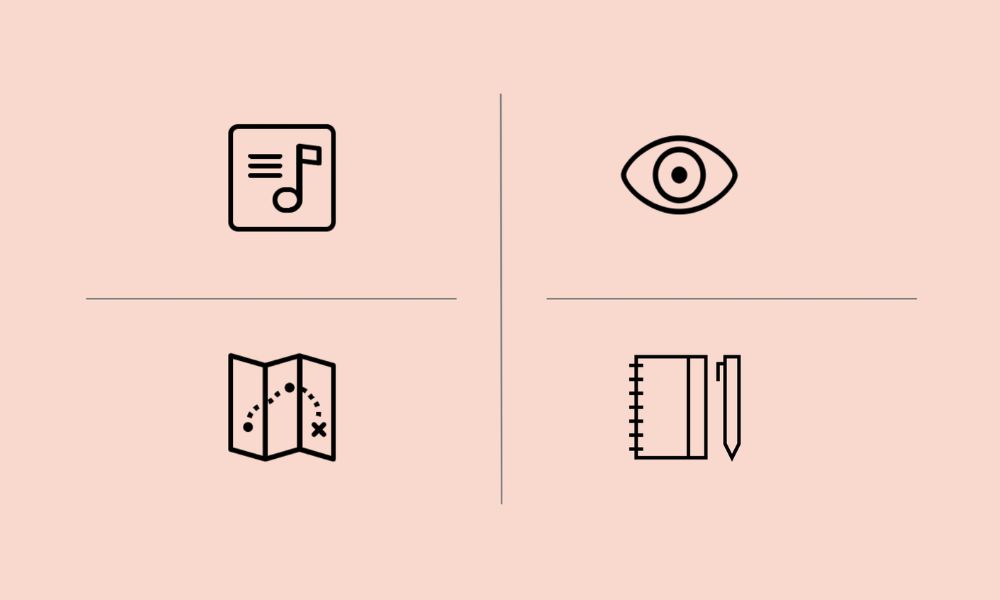
Visuals have long taken center stage, while sound remains an oft-overlooked design feature in the vast landscape of user experience (UX) design. Just as a well-scored movie soundtrack can raise emotion and set context in a film, sound has a profound impact on how users interact with digital platforms.
The user experience should be satisfying and intuitive for customers, and that requires a well-crafted auditory strategy to achieve. User experience sound design, or UX audio, is the practice of enhancing interactions in digital products and interfaces through auditory elements.
It’s not just about adding sounds; it’s about understanding how those sounds influence user behavior, engagement, and emotional response. A subtle notification, a crisp, or muted, button click, or a lush startup sequence—these sounds can turn a transactional experience into a multisensory engagement.
This deep dive into the world of UX sound design is for the designers and creative minds crafting journeys for the digital consumer. Take a closer look at the dos and don’ts of user experience sound design to craft the ideal user experience for your audience.
The Dos of User Experience Sound Design
The small details in a product experience matter. These tiny nuances affect the perceived value of your products and thus your brand. Your sound design will influence how users feel about your product, with some designs being obnoxious and annoying, while others seamlessly guide customers through their experience. You can use a variety of strategies to elevate the user experience when it comes to incorporating sound. Let’s assess the critical things you must do to accomplish the perfect UX design.
Do Prioritize Sonic Transparency and Consistency
The best sound experiences are often those that you barely notice. UX sound design should blend so seamlessly with the product you pair it with that it feels effortless. These sounds exist to inform the user, not annoy them. Sonic elements should also have a common through line of tonality, key signature and timbre throughout the product experience, providing auditory cues that you can easily recognize and suit the brand’s overarching persona.
Consistency and cohesion help to define, or support, the overarching brand sound and can also boost functionality. Once users begin to be acquainted with your overall tonal palette, they can at times operate across multiple apps while still understanding your product or apps language.
Do Use Sound as an Enhancer, Not a Distraction
Beyond making sure it’s not obnoxious, you should make sure your UX sound design is intentionally crafted to the interaction. Consider the context of the ux and design on a spectrum of more branded vs more functional. Create buckets that show how the sounds scale across this spectrum in order to create an enhanced audio user experience.
For example, a fast four note sequence in the high pitch range is ideal for a more important or severe alert whereas a warm, soft, melodic hook might be better for more branded moment such as a product startup. Think about how your audience is interacting with the product or app when they hear the sound design.
The aim is to complement the visual elements, not compete with them and certainly to not fatigue a user. Use sound where it adds value, such as when confirming an action, alerting to a change in status, or providing feedback. An engaging interaction sound can be just as satisfying as a smooth animation or a crisp typeface.
Do Understand The Device Speaker and Context
We design for a range of products, from mobile apps to cars and robotics. Each of these examples use a wide range of different speakers in unique environments which a designer must fully understand before getting into design.
A sound experience for a mobile app will largely live in the mid to high range frequencies due to its smaller speaker profile whereas designing an audio user experience for in vehicle has the ability to use the full in car system. When designing alerts and notifications for in vehicle, you have the full frequency spectrum to design in the lower pitch range and use sound that people can feel sometimes more than hear.
The Don’ts of User Experience Sound Design
While integrating sound in UX can be powerful, it can also fall flat if you don’t handle it with care. You may make many common missteps when crafting your UX sound design, but we can help you avoid those right now. Examine the don’ts of user experience sound design so you can account for them in every step of your UX strategy.
Don’t Create Noise Pollution
“Simplicity is key,” is one phrase you should always have in mind when implementing the dos and don’ts of user experience sound design. An overly complex soundscape can quickly become a user’s main annoyance. Keep it simple when creating sound for UX. Avoid cluttering the experience with too many overlapping or discordant sounds.
Don’t Overlook Accessibility
Don’t overlook how expansive your audience is, and the additional features they will need to enjoy your product. For instance, not all users will appreciate your auditory innovations. Ensure your sound design is accessible to the hard of hearing, low vision or neurodivergent users (More on accessibility design HERE). Sometimes creating different sound sets for these users is justified or consider using alternatives such as vibration or visual indicators to reduce cognitive load.
Don’t Forget To Test
As mentioned earlier, sound can behave unexpectedly across different devices and auditory conditions. What works in a quiet studio space might not be effective in a bustling cafe. Thus, rigorous testing is essential to validate the usability and effectiveness of sound elements in varying environments on different devices.
Testing is a key part of the quality control process because it will help you refine your UX design. Creating a versatile sound design strategy for your user experience requires the help of experienced auditory experts who can make precise but powerful adjustments to get it right.
For example, at CMoore Sound, our product sound design relies on factors such as branding, accessibility, and functionality. While it may seem complicated to balance these factors across UX design, working with audio experts ensures you can translate your brand into a quality user experience on medical devices, social apps, and more.
Implement UX Sound Design Today
Understanding range and context is pivotal. Textual elements are usually spoken words or ultra-clear audio tones, often in the mid-range, creating informative sounds. Often, sounds coexist with a visual animation, ensuring a multi-sensory cue that’s hard to miss.
A seamless, well-implemented sound design strategy can significantly enhance user engagement, leading to higher retention and conversion rates. You create a more memorable and connected experience, especially for brands with strong audio recognition signals by fostering a brand’s sonic identity.

Experiential marketing provides a direct, immersive way for brands to connect with their target audience. Elevating your experiential marketing strategy requires focusing on brand recognition and multisensory experiences. Let’s dig deeper into the role of audio in experiential marketing to set your strategy on the right path now.
Immersion for the Audience
Marketers are crafting campaigns that go beyond mere transaction, aiming to captivate the consumer’s senses, emotions, and intellect, with immersive brand experiences as the centerpiece. This marks a pivotal shift to a more holistic sensory approach, where every aspect of consumer interaction bears the brand’s indelible imprint.
For instance, VR is a common example of modern experiential marketing—it goes beyond being a TV ad and becomes a tactile experience. Audio grounds these experiences in an immersive environment, such as the sound effects that bring a virtual reality showcase to life. Likewise, the sounds of the products that each member of your target audience interacts with bring the brand to life.
The Sonic Impression
The role audio plays in experiential marketing is critical to making the right first impression. Each sound helps curate the experience’s ambience, which speaks to your brand’s overall tone.
Auditory experiences, in particular, can evoke powerful emotional responses. From the lilting whispers of luxury brands to the faster tempo’s and booming basslines that signal high-energy retail environments, sound carves identity and shapes memory.
Not only must you create the right sound cues, but you must also optimize the volume for an immersive but unobtrusive experience. Simply put, music and other audio in your experiential marketing strategy shouldn’t be obnoxiously loud. Focus on sounds that are commanding and present but aren’t loud enough to distract or annoy your potential customers.
The concept of a sonic identity is becoming as indispensable as a visual logo. Through meticulously crafted sounds, brands can assert their presence across diverse media landscapes, ensuring recognizability and fostering emotional connections with consumers. In experiential marketing, use your audio cues in tandem with carefully curated visuals to truly immerse your audience in the experience.
Letting the Brand Shine
Sound is deeply intertwined with memory, emotion, and cognition. In creating a soundscape for brands, it’s necessary to tune into the psychological underpinnings of sound. The right sound, at the right time, can subliminally nudge consumer behavior, casting impressions that last.
The “ding” of a text message, the hum of a bustling airport, or the clack of heels on marble floors—these sounds, unspoken icons of our daily existence, prime our brains for action. They set the scene, guide our focus, and influence the emotional color of the moment.
In a marketing context, this means sound is a navigator, able to steer the narrative surrounding a product or service. Create an experiential marketing plan that relies on auditory experiences that perfectly embody your brand’s values.
Taking your core values and transforming them into sound assets ensures that you can communicate with your audience without having to say anything. With the right audio, anyone using your products or watching your ads will easily understand your brand.
For example, at CMoore Sound, our experiential sound design services focus on creating a soundscape that matches your brand ethos accurately. Develop your experiential marketing strategy using the information above to start building an immersive experience that embodies your brand beautifully.

A melodic or sonic element that represents your brand is the crescendo that cements your place in a customer’s mind. The impact of your audio logo is as critical as any visual branding and has actually been proven to be more easily recalled by consumers.
Crafting the perfect audio logo is akin to penning a timeless tune that sticks in people’s heads for endless amounts of time. An audio logo is a marriage of sonic art and intentional branding that echoes long after it ends.
This guide will lead you through the harmonious process of creating and refining the auditory identity that truly reflects your brand’s essence. Evaluate this comprehensive guide to get a detailed look at how to create the right audio logo for your brand.
What Is an Audio Logo?
Let’s first break down precisely what an audio logo is and how it can be used for a brand. Audio logos, also known as sonic logos, are short, powerful sonic textures or melodies that capture the essence of your brand in a series of pleasing notes.
They form part of the multi-sensory experience that is branding, and when executed strategically, they promise an unparalleled return in brand recognition and recall. Creating a consistent audio logo ensures that your audience always knows when they’re engaging with your brand or using your products and services.
Visual branding and audio logos are formidable partners, and in a world where we can more easily share sights and sounds, an audio identity can be your most memorable trait. A pleasing audio logo ensures that if a customer hears your ads several times in a day or uses your app or product, they have a pleasing and consistent auditory experience.
Audio logos typically live at the beginning or end of an advertisement, but that’s not the only place where they can go to work for your brand. Think of the startup sound on your phone or your favorite streaming services; they create an intentionally designed sonic experience when customers engage with them. That Peloton you ride every week isn’t a silent tool; every sound that it makes is part of an audio ecosystem that creates a brand’s identity. Plus, you can develop an audio logo that’s flexible enough to fit various touchpoints and applications, such as for branding across social media, TV commercials, and radio ads.
Step 1: Research and Discovery
Before having an idea of what your audio logo should sound like, you need to do some upfront research and discovery into setting a strategic foundation that supports your brand values and principles. Taking a look at brands in the direct market as well as aspirational brands allows you to uncover best practices while making sure that your approach to creating your audio logo will be different from others. Listening closely to your competitors’ audio branding, as well as the preferences of your target audience, is essential. Study the audio tactics of companies both within and outside your industry. How do their ads ring in your head, on the radio, or on TV? Consider how they affect you and the intended audience, and try to get an understanding of what may be on- or off-brand for you before getting into creation.
Ultimately, this initial stage is all about setting a strategic foundation that builds trust with internal teams and collaborators in aligning on an agreed upon direction or objective before getting into design.
Step 2: Design and Refinement
This is where the fun really takes off. A seasoned composer or a sound design team brings invaluable artistic and technical skills to the table in crafting audio brand assets. Their role is to translate brand values and principles into sound and music in distinct ways that support how your brand wants to be perceived in the world.
In the initial round of design, you should expect to go wide in terms of how these values are expressed, with many options across a number of concept directions. These initial concepts are the starting point where the design team receives feedback from stakeholders inside the brand and the process begins to narrow through several more rounds of iteration and refinement until we get to a final few audio logo options.
Step 3: Assessing Your Logo’s Effect
Before you debut your audio logo, it should undergo testing and possible reiterations to ensure it finds its audience. As with any marketing materials, feedback comes throughout the design phase with key stakeholders, but it’s also important to consider internal testing or third-party testing to analyze audience responses either post-launch or during the design phase. Organize focus groups to gauge the immediate reaction and potential sticking power of your audio logo. This feedback can help in making tweaks before the final launch. You don’t have to stop refining your audio logo after its initial release; it can evolve and grow as your company does throughout the years.
An effective audio logo should be memorable and should capture the brand’s essence in a few sonic beats. The key here is to keep it simple and catchy. A complex audio logo that’s hard to remember can be as detrimental as a shoddy visual logo.
The audio logo must resonate with the brand’s voice, tone, and personality. A luxury brand wouldn’t use a jingle that sounds like a kids’ cartoon theme, and conversely, a children’s brand shouldn’t evoke regality and class in its audio identity.
Step 4: Balancing Your Branding
Implementing your audio logo across various marketing channels is the final step before it begins to define and distinguish your brand. The audio logo should be omnipresent without being overbearing, and it might be wise to consider variations of short-form, long-form, or different instrumental variations that suit different moods. This allows ultimate flexibility to scale your audio identity.
Monitor the impact of your audio logo on consumer perception through brand surveys and other feedback channels. Look for key metrics like brand recall and overall brand affinity.
Remember that an audio logo expands across a wide range of industries, so considering the best marketing avenues for your niche is key. For instance, at CMoore Sound, we have audio branding services available, and we’ve developed logos for brands such as State Farm, VUDU, and Peloton, to name a few. No matter the industry you’re in, you can stand out auditorily.
Creating Your Logo Today
These tips for choosing the right audio logo for your brand will help you develop a strategy that stays in the minds of your customers.
Your audio logo represents more than just an afterthought in the wider branding strategy. It’s a pivotal player with the potential to become an earworm in the minds of consumers. In the world’s continuous chorus, the right audio logo for your brand is the melody that stands out.
In your quest to find this perfect sound, consider the encompassing power of your brand’s reach, listen to your brand’s heartbeat, and develop the next landmark sound in the story of your brand. Bring your brand to an audio logo expert today so that you can start brainstorming the perfect auditory design for your company.


Driving is not just about getting from point A to point B; it’s an experience that engages the senses, especially hearing. Paying attention to the sounds cars make plays a critical role in keeping everyone safe on the road while boosting immersion, brand recognition, and affinity.
Through intentional sound design, cars can communicate with us, making driving safer and more intuitive. Reflect on how sound design for cars improves road safety so you can keep your vehicles as safe as possible for drivers and pedestrians.
Enhancing Functionality and Immersion
In combination with visuals and haptics, sound can be used to make the driving experience more informative, communicative, and immersive. The revving of an engine, the tick of a turn signal, and the quick repetition of a forward collision alert guide the driver’s decision-making process and aid their reaction time.
The sudden loudness or increase in pitch of a severe warning instantly communicates critical information to the driver. On the other hand, calm, harmonious, musical tones make brand moments like a welcome sound more delightful and immersive reinforcing a brand’s values. These more immersive sounds especially come into play when we begin thinking about autonomous driving experiences. Ultimately, these acoustic cues, whether functional or immersive, serve as an extension of the senses.
A well-designed sound environment reduces visual distractions, preventing sensory overload and improving a driver’s ability to focus on the act of driving. It also ensures the vehicle’s audio cues are distinct enough to be communicative about the intention of the alert or interaction.
Improving Pedestrian Safety
Beyond the confines of the cabin, vehicle sounds reach pedestrians and cyclists and provide information necessary to be able to react. The hum of an engine must be able to alert nearby pedestrians to incoming cars. As EV’s are becoming more prominent, there is an even bigger need for engine sounds to be intentionally designed for safety because EV’s are naturally quiet. In fact, the National Highway Traffic Safety Administration has passed a law mandating specific requirements for car manufacturers to emit sounds for their EV engine tones. These newer engine tones, called Acoustic Vehicle Alerting Systems (aka AVAS), make pedestrians aware of the otherwise quiet rumble of modern EVs.
With the introduction of AVAS sounds for automotive brands, it offers an opportunity to rethink the soundscape of the future that increases pedestrian safety while also being reflective of their brand. These intentionally designed sounds can project harmonious textures that serve as warnings to those in the vicinity without shattering the peace of the vehicle’s interior or polluting our natural soundscapes.
Meeting Manufacturer Needs
The automotive industry resonates with innovation, especially in the realm of sound design. The key to using sound design in cars for improving road safety is working with professional sound designers who can bring your product to life.
How long a sound lasts, how pleasant it sounds, how loud it is, or what pitch range it is in—these are very strategically designed to fit the need of an interaction. Work with sound designers who have experience in the automotive industry to ensure your needs are met.
The integration of purposeful sound design in vehicles offers benefits beyond acoustics. It melds brand and functionality in ways that enhance the driving experience. Talk to professional sound designers today to make the best audio decisions for your vehicles. At CMoore Sound, our team excels in experiential sound design and other auditory solutions that ensure products and brands stand out and have done so with the likes of Lucid Motors, Tesla, and Waymo.

Developing a successful audio brand strategy means creating a comprehensive approach that aligns with your brand identity, values, target audience, and overall marketing objectives. Sound, with its profound ability to charm, motivate, and console, is a primal communicative force. This is one of the biggest reasons that companies imbue their brands with identifiable sound logos, UX sounds, UI sounds, and other auditory markers.
Learning how to develop a successful audio strategy for your brand is critical. But where do you start? Here’s a step-by-step guide to creating an effective audio brand strategy.
Identify and Translate Your Brand Values
Most brands have a set of brand values or principles that serve as a guiding light for how they would like to be perceived in the world. The brand mission, vision, values, or personality are typically a driving force that dictates how a brand comes to life visually and verbally, but what about sonically? Brands need to also consider how sound can support these values or principles to align with the brand in a holistic way.
From excitement to serenity, you can channel many emotions with the right audio strategy. Think about the characteristics and qualities that define your brand and how you can translate them into instrumentation, melody, or rhythm to bring your brand to life sonically.
Research the Competitive Audio Landscape
In order to differentiate your brand from others, you must first understand the direct marketplace and how competitors are using sound. From here, you can make strategic decisions on how you craft your sounds for specific touchpoints within the brand ecosystem. It’s also valuable to understand other markets and how they use sound to inform best practices that will help guide you in the design process.
Understand Where Audio Can Make an Impact
Every brand has certain touchpoints where audio can play a role and make an impact within the brand ecosystem. It’s important to identify these touchpoints and channels where your audience engages with audio content the most, whether through an app, advertisements, or experiences.
If your brand is really driven by your products, it might be best to forgo a sound logo and, instead, index in-product sounds that support the user experience. These sounds can be very impactful inside the product experience and can be leveraged in marketing materials and advertisements to drive recall and encourage direct connection to your products.
Create and Refine Your Sonic Identity
There are many different types of assets that can make up your sonic identity, and it’s imperative that your sonic identity reflects your brand values and resonates with your target audience. Whether for products and apps, brand music, or experiential sound for larger-scale events and conferences, your sound must support your company’s values for it to resonate at the brand level.
It’s not always easy to craft iconic brand music, sound logos, or UX sounds, which is why working with an expert through this process is invaluable. Sonic branding agencies help companies create branded auditory experiences that beautifully market and symbolize their brands. Partner with a reliable agency that makes it easy to communicate your vision to an expert who will weave your ideas into the perfect sound for any touchpoint.
Work with experienced sound designers and composers to create custom audio assets that are unique to your brand and evoke the desired emotional responses. Ensure consistency in your sonic identity across different touchpoints and channels to reinforce brand recognition and recall.
Each audio format—music, sound logos, UX sounds, or UI sounds—offers different emotive potentials. Decide which will be the lead in your brand’s audio narrative and which harmonizes best in the background. You can use each of these sounds to bring your brand to life.
A jumble of sounds is merely noise, but a consistent audio identity across campaigns and channels becomes a symphony.
Scale Audio Across Touchpoints
In order to make an impact on a holistic brand level, your audio strategy must resonate across touchpoints and channels, each working in a connected way to showcase your brand and create a great user experience for the consumer. Your physical and digital touchpoints are essential in modern marketing, each ready to carry your brand’s audio narrative further.
Implement audio seamlessly into these touchpoints to create a cohesive and immersive brand experience that can also be flexible enough to support the medium. Consider the user experience and context when implementing audio and adjust certain sound elements to make sure it adds value and enhances engagement without becoming intrusive or distracting.
Measure and Iterate
Understanding the information above will help you build a sonic identity that brings your brand to life across a wide range of platforms. However, it’s also important to test your audio to continue adapting for the future.
We work with third-party testing partners that test audio assets to make sure they are hitting the mark for brand fit and functionality. This is a step that is often missed but is crucial in getting an objective view of how your sonic brand universe is performing in the world. Having a data point to track against allows your brand to continue to iterate and refine until it begins performing in the marketplace.
Growing With the Audience and Industry
Feedback is essential for growth. Listen to what your audience is saying and prepare to make tiny adjustments that lead to a cohesive vision for your brand and an enticing product for the consumer. Continuously refine and optimize your audio brand strategy to adapt to changing consumer preferences, technological advancements, and market trends.
You certainly don’t have to change your strategy to accommodate every critique, but you should listen to what the audience is saying so that you can reflect on ways to showcase your brand effectively.
Sound is a very versatile tool that companies can use to elevate their brands. By following these steps, you can develop a successful audio brand strategy that strengthens your brand identity, fosters emotional connections with your audience, and enhances the overall brand experience across various touchpoints.
At CMoore Sound, our sonic branding agency works with businesses to build comprehensive audio strategies that are flexible and ready to fit many different channels. Start working with a branding agency today if you’re ready to spread your brand’s message further and with the best presentation possible.
